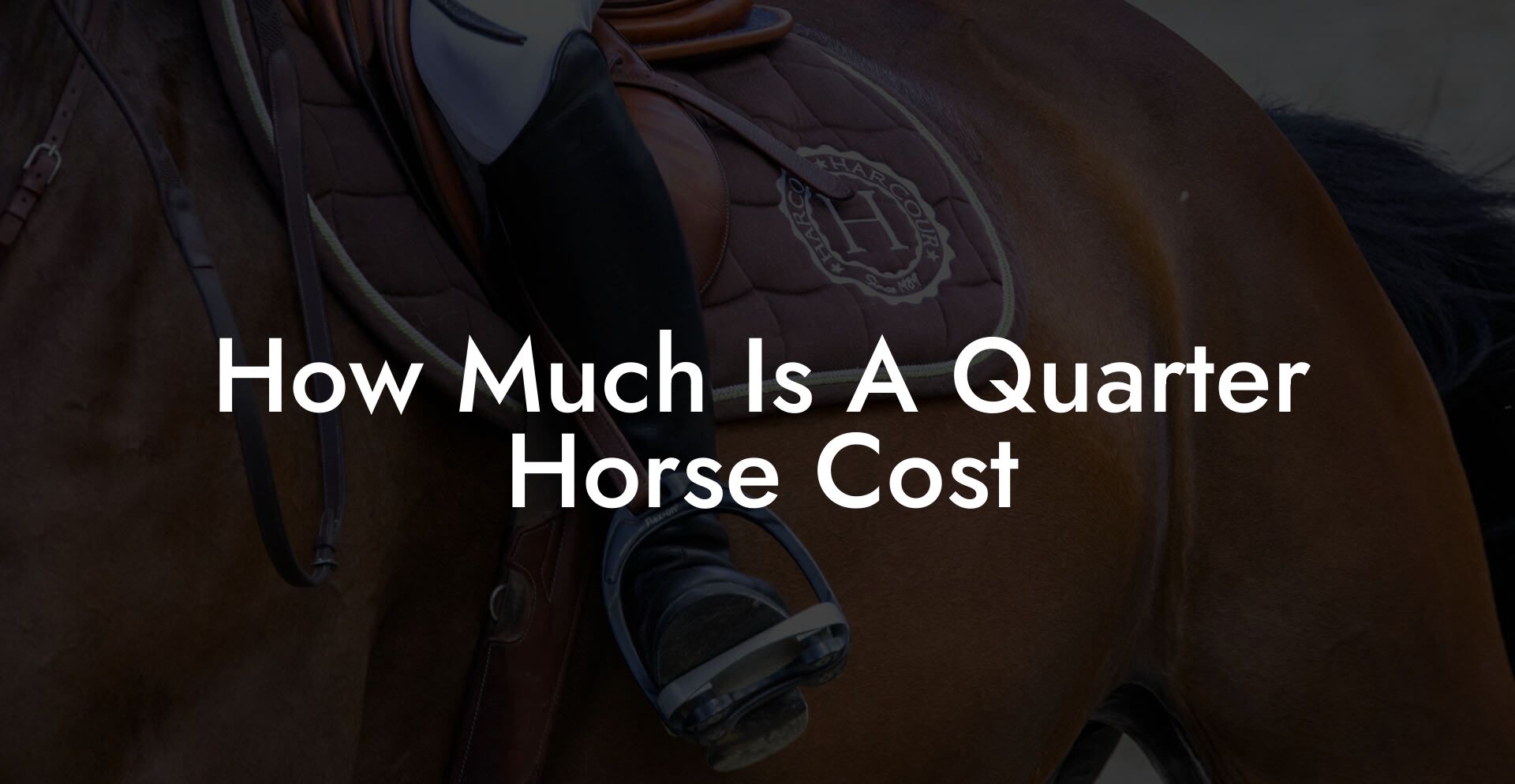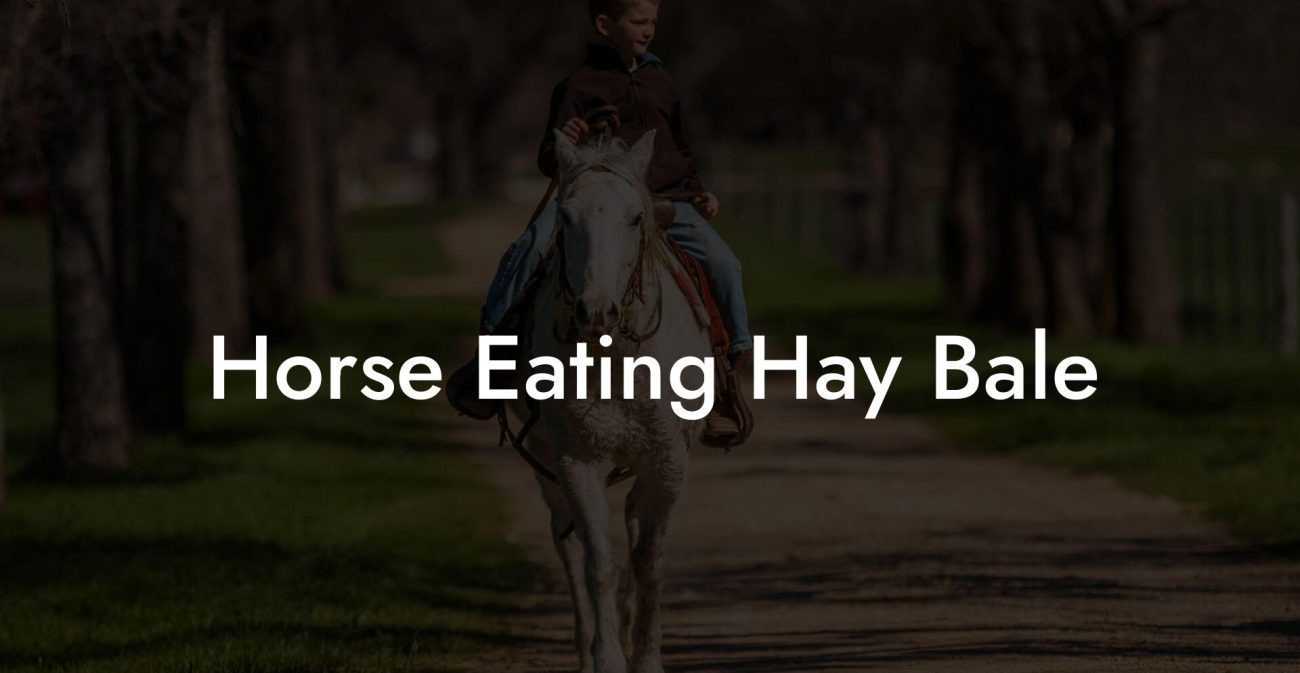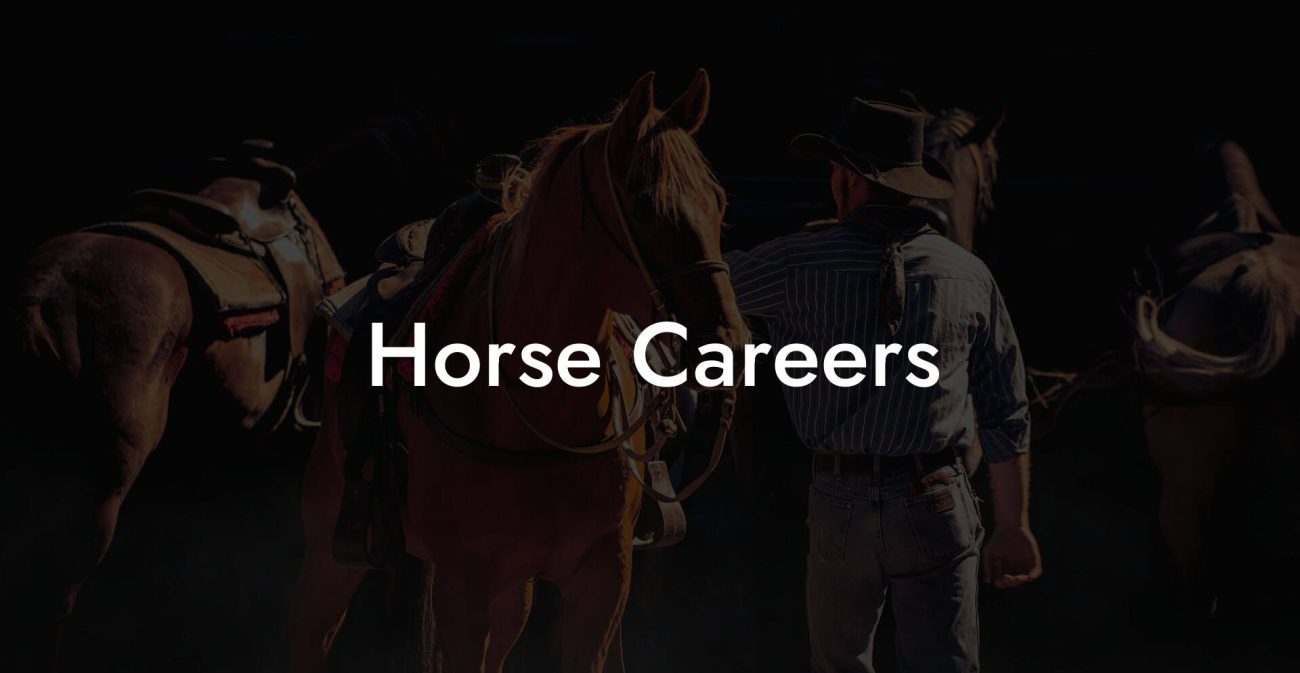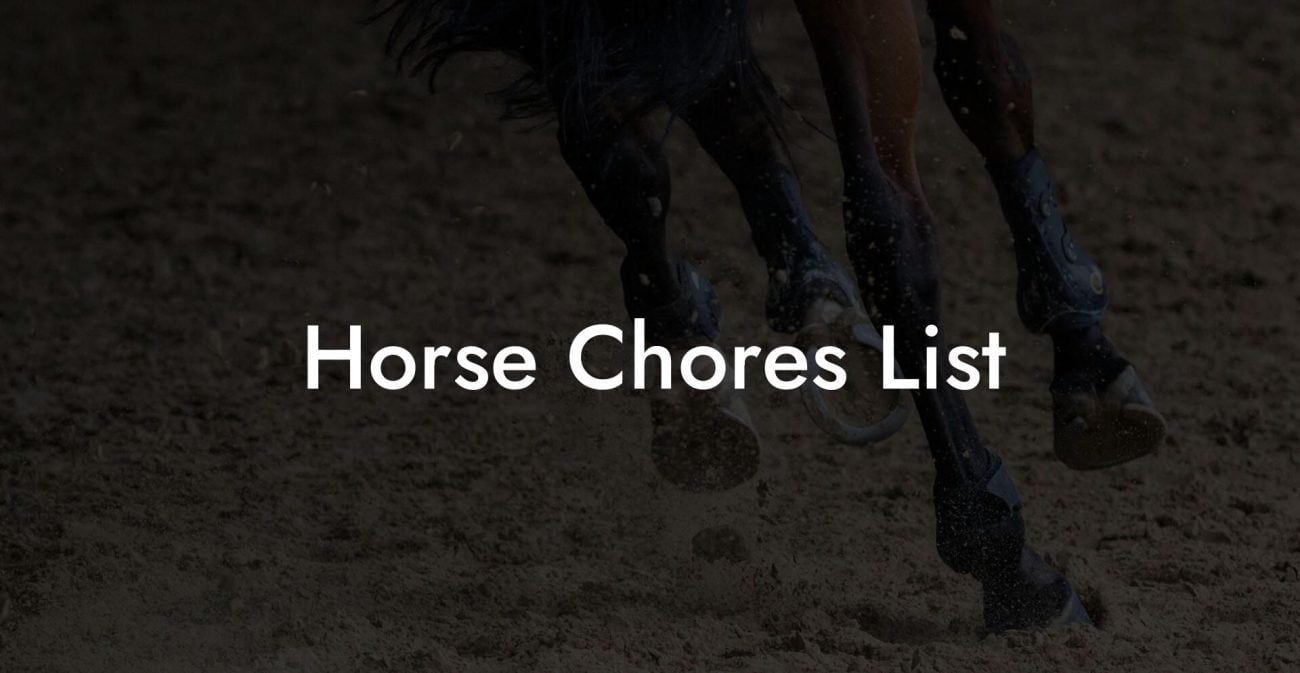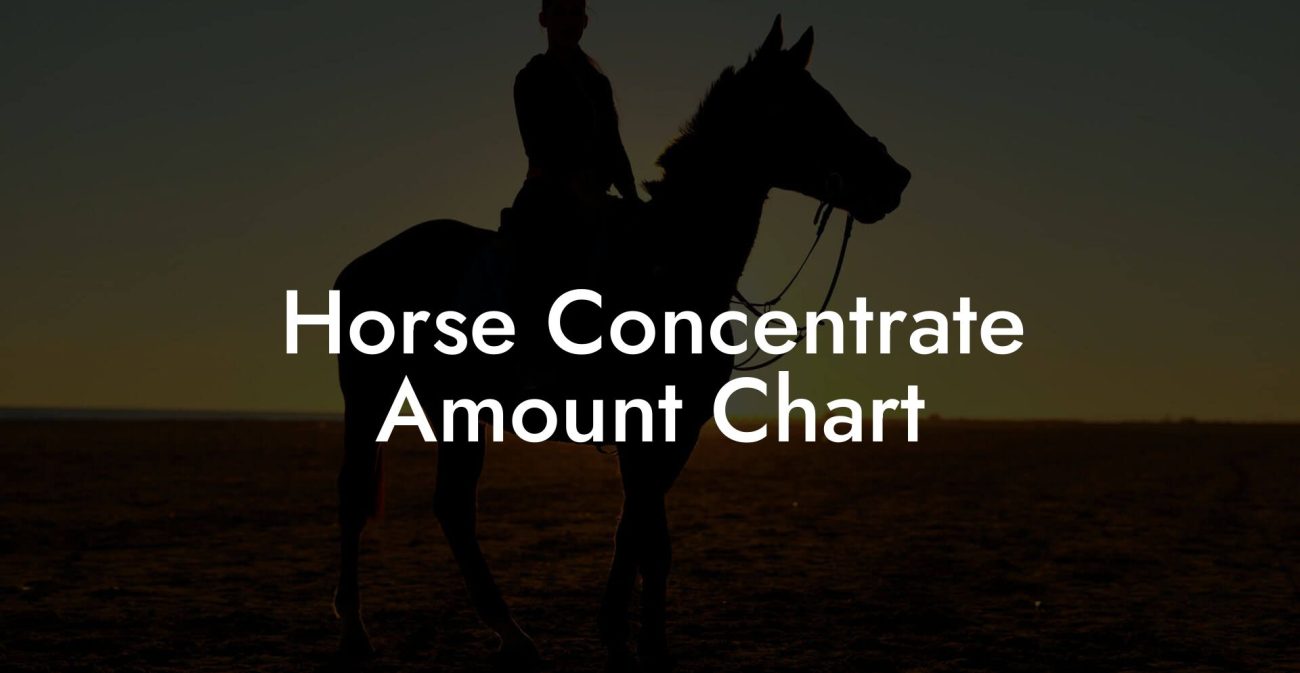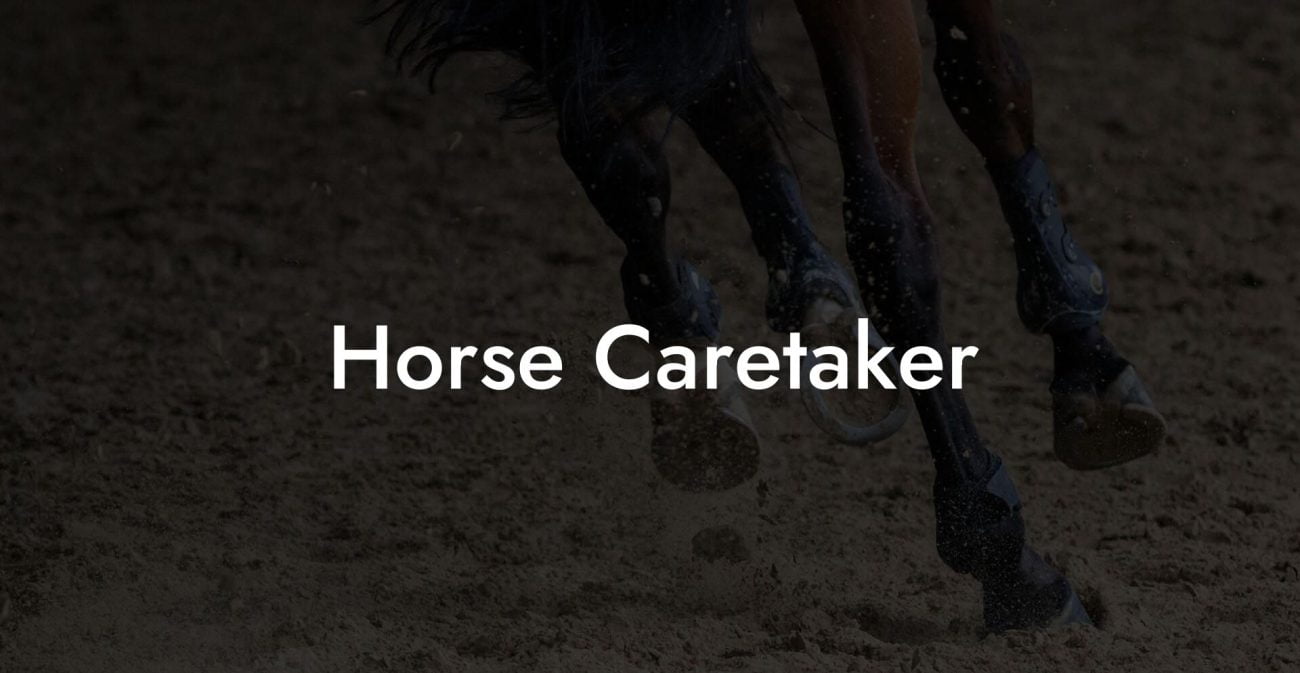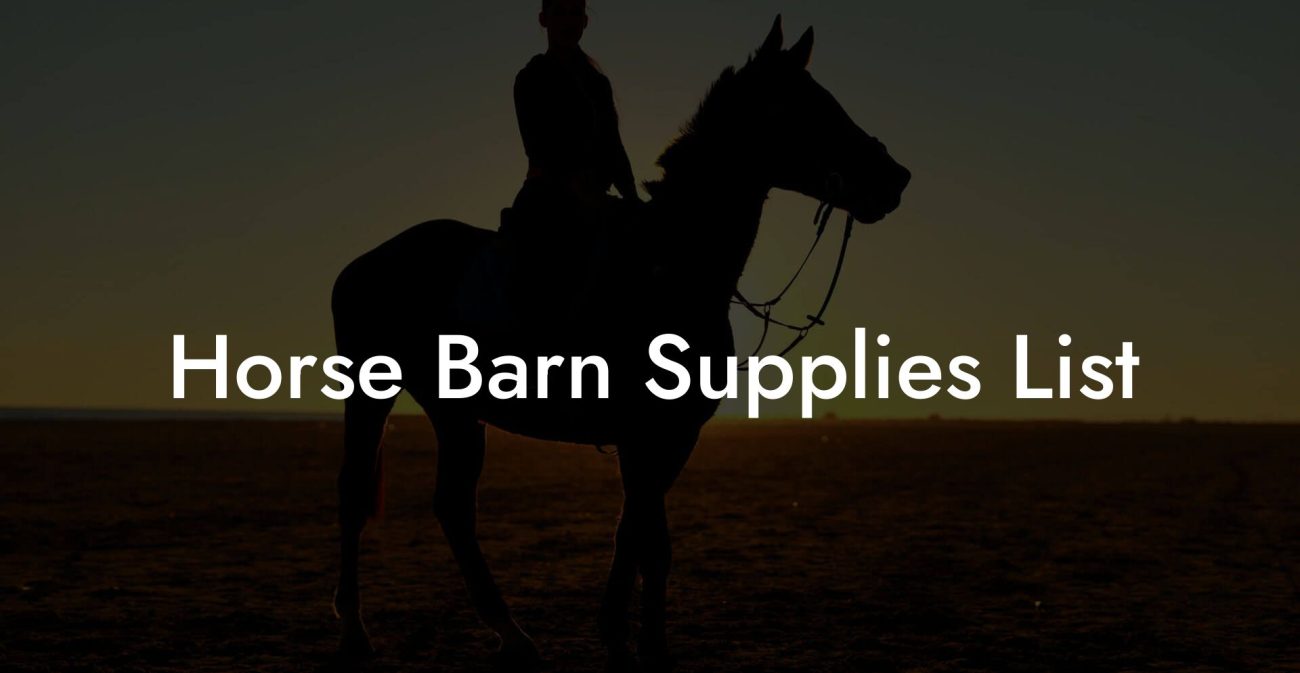Ever wondered how much it truly costs to snag a sleek, spirited quarter horse? Whether you’re dreaming of lazy afternoons riding through sunlit pastures or planning a savvy investment in your equine passion, understanding quarter horse cost is the key to unlocking a world of opportunity (and epic hay bales). In this definitive guide, we dive into everything from the various price factors to those sneaky care expenses that keep your four-legged friend prancing happily. Get ready for an in-depth ride through the world of quarter horses that’s as engaging as it is essential – perfectly tailored for Gen-Z and millennial horse enthusiasts who want to ride smart and care deep.
Quick Links to Useful Sections
- Navigating the Price Tag: What Determines a Quarter Horse’s Cost?
- New vs. Established: Comparing Fresh Foals and Seasoned Steeds
- The Allure of the Newcomer
- The Seasoned Champion
- Beyond the Purchase: Ongoing Care and Maintenance Costs
- Feeding & nutrition
- Veterinary & Healthcare Costs
- Farrier Visits and Hoof Care
- equipment, Tack, and stable Essentials
- Smart Shopping: Tips to Find an Affordable Quarter Horse
- The Investment Perspective: Is a Quarter Horse Worth It?
- Hidden Costs: Insurance, Healthcare, and Unexpected Expenses
- Horse Insurance
- Unexpected Vet Expenses
- Facility Costs
- Quarter Horse Care: Keeping Your Equine Partner in Top Shape
- Daily Routines and Grooming
- Balanced Nutrition and Feed Management
- Exercise and Training Regimens
- Health Check-Ups and Preventive Measures
- Marketing Your New Hobby: The Social Benefits of Horse Ownership
- Technology and Tools: Modern Aids for Managing Quarter Horse Ownership
- Breaking Down the Numbers: Typical Price Ranges for Quarter Horses
- Resources and Community Support: Your Next Steps
- Investing in Your Passion: Financial Planning and Budgeting for Horse Ownership
- Create a Detailed Budget
- Plan for Emergencies
- Research Financing and Payment Options
- Quarter Horse Insurance: Protecting Your Investment
- Why Insurance Matters
- What’s Covered?
- Cost vs. Benefit
- Success Stories: Real-Life Tales from Quarter Horse Owners
- Rider Rising from the Ashes
- A Veteran’s Second Wind
- The Collaborative Co-Ownership Model
- The Emotional and Lifestyle Benefits of Quarter Horse Ownership
- Frequently Asked Questions on Quarter Horse Cost and Care
- Embracing the Quarter Horse Journey: More than Just a Price Tag
- Setting the Stage for Your Next Steps in Quarter Horse Ownership
- Join Your Local Equine Community
- Educate Yourself Continuously
- Plan Meticulously and Stay Flexible
- Celebrate Every Milestone
- Your Next Step: Dive into a World Where Passion Meets Pragmatism
Navigating the Price Tag: What Determines a Quarter Horse’s Cost?
When it comes to quarter horse cost, there isn’t a one-size-fits-all answer. Much like picking the perfect sneaker drop or a vintage vinyl record, the price depends on multiple variables that transform the simple act of buying a horse into an art (and science). Here’s a breakdown of the major factors:
- Bloodlines & Pedigree: Pedigree isn’t just a fancy term, it’s often the primary driver of the price. Horses with champion bloodlines or proven track records in rodeo events usually demand a premium.
- Age: Foals and young horses come with a wide range of price points. While a young colt full of potential might be a thrilling investment, it might also require more training and care. Meanwhile, a seasoned mature horse may cost a bit more upfront but bring experienced reliability.
- Training & Performance: Is your dream horse a ranch hand, a competitive show performer, or a trail-friendly buddy? Training levels matter, and the more battle-tested the horse, the higher the cost.
- Conformation & health: Physical soundness and overall health impact price. A well-conformed, injury-free horse will naturally command a better price than one with potential health risks.
- Market Trends: Just like sneaker prices fluctuate with hype, so do horse prices. Economic conditions, local demand, and regional preferences all shape the market.
These factors interact to create a price spectrum that can range anywhere from a few thousand dollars for a promising youngster to tens of thousands for a proven champion. And remember, a higher price tag doesn’t always guarantee a better fit for your lifestyle!
New vs. Established: Comparing Fresh Foals and Seasoned Steeds
You might be wondering whether investing in a young, untested foal is better than buying a seasoned quarter horse. Each option has its perks and pitfalls:
The Allure of the Newcomer
A young quarter horse appeals to those who love the idea of shaping and training their steed from scratch. The cost of a foal is often more affordable, and the promise of potential is like that rare vintage sneaker – you know it could be big in the future. However, here’s a note for the practical: young horses require time, patience, and a hefty dose of professional training before they can really hit the show ring (or the walking trail).
Gen-Z riders and millennial enthusiasts might relish the hands-on experience, bonding with a young horse and watching it grow into its potential. That said, unpredictability is part of the package. Without adequate training, a foal might develop bad habits that could escalate maintenance and training costs down the line.
The Seasoned Champion
On the flip side, a mature quarter horse comes with a resume as impressive as that trendy LinkedIn profile you’ve been admiring. These horses have been through the paces, be it in rodeos, ranch work, or leading trail rides, and they come with proven performance records. The upfront cost might be steeper, but with a seasoned horse, you’re paying for experience, discipline, and a shorter learning curve.
For those who value reliability and instant readiness for competitions or ranch work, an established horse could be the best bet. The margin for training mishaps is lower, and you get a deeper insight into the horse’s temperament and abilities right out of the gate.
Beyond the Purchase: Ongoing Care and Maintenance Costs
Let’s be real, owning a quarter horse isn’t like snapping up a trendy new phone (even if both come with their accessories). Once you’ve made the initial purchase, it’s crucial to plan for recurring expenses that keep your horse in tip-top shape.
Feeding & nutrition
The quality of your horse’s diet plays a major role in its performance, health, and, ultimately, your wallet. Good quality hay, grains, and supplements can add up fast. Whether you’re feeding organic, locally sourced options or everyday staples, budgeting for nutrition is non-negotiable.
Veterinary & Healthcare Costs
Just like regular checkups at your favorite coffee shop, horses need routine veterinary care. Aside from vaccinations and preventive measures, unforeseen health issues may crop up, contributing to your total upkeep. Costs here can be unpredictable, which is why a good insurance plan (discussed later) is essential.
Farrier Visits and Hoof Care
Your quarter horse’s hooves are like the tires on a high-end sports car: essential for smooth performance and overall health. Regular farrier visits (typically every 6-8 weeks) keep hoof issues at bay. It’s a small price to pay for long-term mobility.
equipment, Tack, and stable Essentials
From saddles and bridles to grooming supplies and stable maintenance, the accessories you choose will also influence your overall spending. A high-quality saddle may seem like an extravagant expense, but comfort and durability are worth the investment for both you and your horse.
Maintaining a balance between cost and quality can help ensure your four-legged buddy lives its best, healthiest life without breaking the bank.
Smart Shopping: Tips to Find an Affordable Quarter Horse
So, how do you navigate the world of quarter horse cost while ensuring you get the best value? Here are some savvy tips and tricks:
- Network in the Community: Join local and online equine communities where seasoned owners share insights and sometimes even list well-cared-for horses at competitive prices.
- Attend Local Shows and Auctions: These events are not only great for scouting talent, they also give you a feel for current market trends and price ranges.
- Ask for Veterinary Records: A well-documented health history can save you from future surprises. Never feel shy about asking for a full record before sealing the deal.
- Consider a Trial Period: Some sellers offer lease-to-own or trial riding options. This can be a great way to ensure the horse's temperament, training level, and overall compatibility with your style.
- Partner Up: If fully owning a high-quality horse sounds out of reach, consider sharing ownership with a friend or joining a cooperative that allows several enthusiasts to invest and share the responsibilities.
These strategies not only save you money but also immerse you in the community, letting you learn firsthand from those who live and breathe horse care every day. After all, buying a quarter horse is as much about investing in a lifestyle as it is about the price tag.
The Investment Perspective: Is a Quarter Horse Worth It?
Let's address the bigger question: beyond the financial figures, what exactly makes a quarter horse a valuable investment? For many enthusiasts, the decision to invest in a horse is about more than just the number on the price tag.
Quarter horses are renowned for their versatility. They are the unsung heroes of ranch work, competitive sports, and even leisurely trail rides. Their agility, intelligence, and spirited personality bring a unique kind of companionship and performance that is hard to quantify in dollars and cents.
Consider the long-term benefits: seasoned training, proven performance records, and even the joy and mental health benefits that come from working with a magnificent animal. A well-maintained quarter horse can serve you for years, even decades, provided you commit to proper care and invest in regular upkeep.
So, while the initial cost might be steep, the overall return on investment includes not only tangible results in performance and reliability but also intangible rewards such as emotional satisfaction and lifestyle enhancement.
Hidden Costs: Insurance, Healthcare, and Unexpected Expenses
Every proud quarter horse owner eventually encounters those “just in case” costs that tend to creep in unexpectedly. Understanding these hidden expenses is crucial for long-term planning.
Horse Insurance
Think of horse insurance as a safety net for your prized companion. While it may add a monthly expense, the peace of mind that comes from knowing you’re covered in case of accidents, medical emergencies, or even theft is priceless. Depending on coverage options and your horse’s value, insurance costs can vary widely.
Unexpected Vet Expenses
No matter how well you care for a horse, unpredictable health issues can arise. From emergency surgeries to chronic conditions, knowing how much you might need to set aside for healthcare is essential. Many seasoned owners keep a dedicated “rainy day” fund to cover those inevitable vet bills.
Facility Costs
If you don’t have your own pasture, stable fees can add up quickly. Boarding fees, maintenance of training arenas, and other facility-related costs should all be factored into your overall budget. Do your homework, sometimes local boarding options or shared facilities can offer better rates without compromising on quality.
Being transparent about these hidden costs at the outset helps avoid financial surprises and ensures that you’re fully prepared for the responsibilities of horse ownership.
Quarter Horse Care: Keeping Your Equine Partner in Top Shape
Now that we’ve navigated the financial landscape, it’s time to talk about what comes after the purchase: care. Owning a quarter horse is an ongoing commitment that extends well beyond the initial price tag.
Daily Routines and Grooming
Consistent care routines elevate both the horse’s health and the bond you share. Daily grooming not only keeps your ride looking fly but also acts as a crucial check-up to monitor any skin or hoof issues. Gen-Z and millennial owners, with their love for self-care and authenticity, will appreciate that a few minutes of quality grooming can build trust and streamline your overall management.
Balanced Nutrition and Feed Management
As we touched on earlier, nutrition is a cornerstone of horse care. Invest in quality feed that matches your horse’s specific dietary needs. Consulting with a nutrition expert or an experienced trainer can guide you in choosing between various grains, hay, and supplements. This proactive approach not only ensures your horse’s peak performance but can also prevent expensive health issues over time.
Exercise and Training Regimens
An active quarter horse is a happy, and healthier, horse. Whether it’s routine exercise in a spacious paddock, structured training sessions, or an occasional trail ride, regular physical activity keeps the muscles strong and joints flexible. Engaging your horse in creative exercise routines not only enhances performance but also adds a dose of fun to your training sessions.
Health Check-Ups and Preventive Measures
Schedule regular veterinary check-ups to monitor your horse’s overall health, from vaccinations to dental care. Preventive measures like deworming, hoof care visits, and routine examinations go a long way in warding off potential issues. In the long run, these practices are a small investment that saves big bucks on major treatments.
Overall, dedicated care is an evolving journey, a blend of routine, passion, and smart planning that keeps both you and your quarter horse in peak form.
Marketing Your New Hobby: The Social Benefits of Horse Ownership
There’s a social side to horse ownership that’s as exciting as a viral TikTok challenge. Owning a quarter horse opens the door to vibrant online communities, local meetups, and social events that showcase your equine pride. Whether it’s posting majestic riding shots on Instagram or joining forums where seasoned horse enthusiasts swap tips, horse ownership can seriously boost your social cred.
For Gen-Z and millennials, this isn’t just about owning an animal, it’s about creating experiences that blend lifestyle, fitness, and genuine passion. These social connections often lead to shared advice on care, cost-saving strategies, and even unexpected friendship opportunities that last a lifetime.
Technology and Tools: Modern Aids for Managing Quarter Horse Ownership
In this digital age, managing the myriad aspects of quarter horse care and ownership is easier than ever. From budgeting tools and expense trackers to mobile apps designed for equine health management, technology has revolutionized the way you monitor and maintain your horse’s well-being.
Apps can remind you of farrier appointments, track daily feed costs, and even help schedule training sessions. The integration of tech into the equine world means that you’re not just buying a horse – you’re joining a digitally connected community that values transparency, convenience, and smart management.
Embrace these tools to streamline your daily routines, track your horse’s performance, and even share milestones with an enthusiastic online following. This tech-savvy approach makes managing quarter horse cost and care not only efficient but also a bit of fun in itself!
Breaking Down the Numbers: Typical Price Ranges for Quarter Horses
Let’s get into the nitty-gritty numbers. While prices vary by location, pedigree, training level, and market demand, here’s an approximate guide to help set your expectations:
- Entry-Level Quarter Horses: $3,000 to $8,000 – These are typically younger horses or those with basic training. Ideal for riders or enthusiasts starting out, they represent a solid investment if you’re willing to put in additional training and care.
- Mid-Range Horses: $8,000 to $20,000 – This range usually includes horses with moderate training, good conformation, and occasionally a hint of competitive pedigree. They can serve as workhorses on ranches or even take on local competition.
- High-End Competitors: $20,000 to over $50,000 – These horses are proven champions with extensive training, strong bloodlines, and competitive records to back them up. They offer superior performance, but they also come with higher initial costs and potentially increased maintenance expenses.
Keep in mind that these figures are estimates. Various factors, from seasonal market fluctuations to buyer negotiations, may influence the final sale price. It’s wise to work with a reputable broker or trainer when making your decision.
Resources and Community Support: Your Next Steps
Ready to saddle up and dive into quarter horse ownership? Here are some invaluable resources and community channels that can help guide your journey:
- Local Equine Associations: Many areas have organizations dedicated to equine sports and horse care. These groups offer workshops, local events, and networking opportunities where you can learn firsthand from experienced owners.
- Online Forums and Social Media Groups: Join Facebook groups, Reddit communities, and specialized apps where fellow horse owners share tips on quarter horse cost, maintenance hacks, and even daily triumphs and mishaps.
- Veterinary and Farrier Networks: Establishing a relationship with local vets and farriers not only guarantees top-notch care for your horse but also gives you insider access to cost-saving measures and reliable referrals.
- Equine Blogs and YouTube Channels: There is plenty of free content online where influencers and experts alike share everything from feeding plans to advanced training tips, all presented in a style that resonates with today’s digitally savvy audience.
- Local Auction Houses and Breeders: Whether you’re looking to buy or simply want to explore market trends, visiting these venues can give you an on-the-ground understanding of what quarter horses are really worth.
The more connected you are, the better you’ll understand the intricacies of quarter horse ownership. Educate yourself, ask questions, and most importantly, enjoy the ride as you grow into an informed and empowered horse owner.
Investing in Your Passion: Financial Planning and Budgeting for Horse Ownership
Owning a quarter horse is a long-term commitment that goes beyond the initial purchase. Creating a detailed financial plan is crucial to ensuring that your passion stays a source of joy rather than a financial headache. Here are some key elements to consider:
Create a Detailed Budget
Start by listing all the expected costs – from purchase price, ongoing care, feed, equipment, and insurance to unexpected vet visits and boarding fees. There’s no shame in being a penny-wise investor; your horse’s well-being depends on your financial foresight!
Plan for Emergencies
Establish an emergency fund dedicated solely to your horse’s health and unforeseen repairs. Think of it as your personal “just in case” kitty that ensures you’re never caught off guard by an unexpected cost.
Research Financing and Payment Options
If budget constraints are holding you back, consider exploring financing options, owner partnerships, or even lease-to-own programs. Many reputable breeders and sellers now offer flexible payment plans that make the dream of horse ownership more accessible.
With a solid financial plan and clear budget in place, you can focus on what truly matters – building a lasting bond with an incredible quarter horse while confidently managing your costs.
Quarter Horse Insurance: Protecting Your Investment
One often overlooked aspect of quarter horse care is insurance. Horse insurance works similarly to other types of pet or vehicle insurance – it provides a safety net for unexpected situations. Here’s what you need to know:
Why Insurance Matters
From accidents and injuries to theft and liability, insurance offers peace of mind knowing that your investment is safeguarded against adverse events. It’s like having a backup plan for your favorite viral playlist – simply essential.
What’s Covered?
Most insurance policies can include coverage for veterinary bills, loss of use, mortality, and even some third-party liabilities. Make sure to carefully review multiple policies to choose one that best fits your horse’s profile and your risk tolerance.
Cost vs. Benefit
While insurance does add to your monthly expenses, the short-term cost is often negligible compared to the enormous benefits it provides if something unexpected occurs. A detailed conversation with an equine insurance agent can help you tailor the best coverage options.
Success Stories: Real-Life Tales from Quarter Horse Owners
There’s nothing more inspiring than hearing real stories from people who’ve navigated the labyrinth of quarter horse cost and care with grit, humor, and a dash of ingenuity. Here are a few tales that highlight the diverse journeys of quarter horse ownership:
Rider Rising from the Ashes
Meet Taylor, a millennial urbanite turned horse enthusiast after months of yearning for a slice of country life. Taylor started with an entry-level quarter horse that needed patient training and love. Through careful budgeting, community support, and an unwavering passion for equine health, Taylor transformed not only the horse but their entire lifestyle, turning every ride into a soulful Instagram story.
A Veteran’s Second Wind
Jordan, a former competitive rider who lost passion after a career injury, found renewed hope in a well-aged, gentle quarter horse. Despite a higher upfront cost and extra training sessions, Jordan’s story highlights how sometimes investing in a mature horse can pave the way to emotional and physical healing. The journey wasn’t always smooth, but each hoofbeat brought back a newfound drive.
The Collaborative Co-Ownership Model
In another inspiring story, a group of friends pooled their resources to co-own a champion quarter horse. This innovative solution allowed them to share the cost, responsibilities, and joy of horse care while building an extraordinary social network that bridged both rural charm and urban creativity.
These success stories are living proof that with smart planning, community insights, and a genuine love for horses, owning a quarter horse can be one of life’s most rewarding adventures.
The Emotional and Lifestyle Benefits of Quarter Horse Ownership
Beyond numbers and spreadsheets, the magic of owning a quarter horse lies in the emotional fulfillment and lifestyle upgrade it brings. Riding into a 360° sunset after a vigorous morning ride or bonding during quiet grooming sessions can reshape your world. For Gen-Z and millennial enthusiasts, these experiences often become the highlight reels of their lives, moments shared on social media, fuel for self-care, and a way to disconnect from the digital noise.
Integrating a quarter horse into your life can spark a sense of responsibility, pride, and excitement that transcends everyday routine. The constant challenge of learning more about your horse’s care, investing in training, and even exploring new facets of rural living creates a lifestyle that’s both enriched and adventurous.
Frequently Asked Questions on Quarter Horse Cost and Care
Our comprehensive guide wouldn’t be complete without answering some of the most burning questions about quarter horse cost and care. Dive into these FAQs to get even more clarity on your equine journey.
1. What is the typical cost range for a quarter horse?
The price for quarter horses can vary widely, from as low as $3,000 for an entry-level, young horse to over $50,000 for a highly trained, competition-ready animal. Factors like pedigree, age, training, and conformation largely influence the cost.
2. How do ongoing care expenses impact overall costs?
Owning a quarter horse requires budgeting for feed, veterinary care, farrier visits, insurance, and equipment. These recurring costs can add up, so it’s important to plan your finances well beyond the initial purchase.
3. Are there financing options for buying a quarter horse?
Yes, many reputable sellers and breeders offer financing, lease-to-own, or co-ownership models that can make owning a quarter horse more accessible if you’re mindful of your budget.
4. How important is proper training in the overall cost?
Training is essential, not only for your horse’s performance but also to prevent long-term expenses associated with corrective training or handling mishaps. Investing in reputable trainers can save money and heartache over time.
5. What are some cost-saving tips when buying a quarter horse?
Network extensively in equine communities, attend local shows and auctions, research thoroughly, and always ask for detailed veterinary and training histories. These strategies can help you find a quality horse at a fair price.
6. How can I ensure that my quarter horse stays healthy on a budget?
Maintain a balanced diet, follow a consistent grooming and exercise routine, and schedule regular veterinary check-ups. Investing in preventive care is far cheaper than dealing with emergencies.
7. What role does insurance play in managing unexpected expenses?
Horse insurance acts as a financial safety net against emergencies, accidents, and other unpredictable events. It’s a small recurring cost that can save you from substantial unexpected bills down the road.
Embracing the Quarter Horse Journey: More than Just a Price Tag
As you venture into the world of quarter horse ownership, remember that every dollar spent is part of a larger, richer tapestry, one woven with moments of triumph, learning, and genuine connection. It’s not just about the cost, but the shared experiences, the growth that comes from training and caring for an incredible athlete, and the lifelong friendships formed along the way.
Whether you’re managing a tight budget or splurging on that dream horse with a pedigree as legendary as your favorite influencer’s debut drop, the journey is uniquely yours. Every ride, every grooming session, and every community conversation is a vivid brushstroke in the masterpiece of your new equine lifestyle.
So, lace up your boots and get ready for adventures that include trail rides under starlit skies, inspiring social media moments, and plenty of practical tips that make your quarter horse journey both sustainable and rewarding. Your path to horse ownership is paved with challenges, laughs, and continuous learning, embrace it fully and ride on!
Setting the Stage for Your Next Steps in Quarter Horse Ownership
By now, you’re equipped with an abundance of insights into the cost, care, and lifestyle benefits of owning a quarter horse. Here’s how to take your newfound knowledge to the next level:
Join Your Local Equine Community
Nothing beats learning from real-life experiences. Attend local events, participate in workshops, and connect with professional trainers and veteran owners. Their advice can be golden!
Educate Yourself Continuously
Explore the latest trends in equine technology, follow reputable blogs, and subscribe to newsletters that focus on horse care and finance. Constant learning is the key to keeping your horse and your finances in peak condition.
Plan Meticulously and Stay Flexible
Whether you’re budgeting for feed, maintenance, or emergency funds, a thoughtful plan that also anticipates life’s surprises will serve you well. Remember: adaptability is the name of the game.
Celebrate Every Milestone
From your horse’s first victorious stride in a local competition to mastering a new training technique, celebrate each success. Document these memories, share them with your community, and let every triumph fuel your passion further.
Your journey in quarter horse ownership is just beginning. With the right mix of savvy financial planning, dedicated care, emerging technology, and a spirited community, you’re not just investing in a horse, you’re investing in an extraordinary way of life.
Your Next Step: Dive into a World Where Passion Meets Pragmatism
So, are you ready to transform that burning curiosity about quarter horse cost into an actionable plan? Whether you’re taking baby steps or strapping in for the long haul, every decision from here on out is a stepping stone to a rewarding, well-managed equine lifestyle.
From securing the ideal horse that aligns with your budget to embracing the comprehensive care required to keep it prancing happily, the knowledge you’ve gained here is your foundation. Use it to craft a future where every ride is a celebration of both passion and practicality.
Remember, the real value in owning a quarter horse comes not just from a price tag, but from the joys of nurturing a loyal partner, the thrill of the open trail, and the everyday lessons in responsibility and care. Embrace this journey with dedication, humor, and a spirit of adventure.
Let your passion for horses drive you to new heights, and may your experience enrich your life in ways both big and small. The world of quarter horses awaits, grab the reins and ride forward with confidence!

